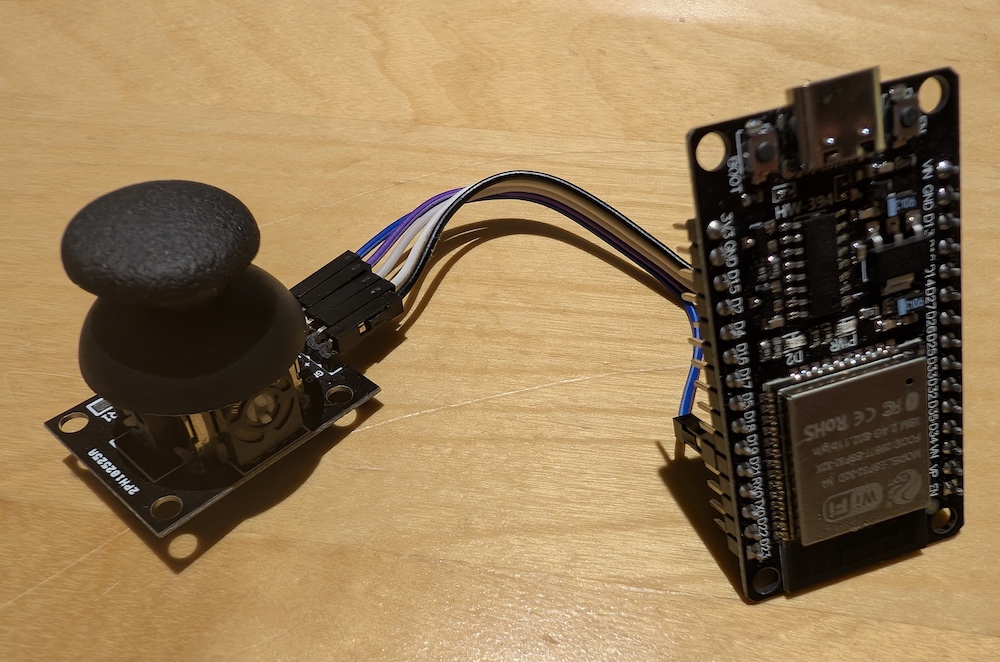Using the BLEMidi.h library, you can get your esp32, the goat
of dev boards, to be a midi server (instrument), or client (it’s complicated).
It’s pretty easy to get your esp32 to play notes:
void setup() {
Serial.begin(115200);
BLEMidiServer.begin("Basic MIDI device");
}
void loop() {
if(!BLEMidiServer.isConnected()) {
return;
}
BLEMidiServer.noteOn(0, 80, 127);
delay(100);
BLEMidiServer.noteOff(0, 80, 127);
}But that’s not really an instrument. I am not a musician, but I wanted something I could play. In walks my joystick unit I used in my last post about making an automated mouse clicker. Out walks this musical abomination:

If you connect the pin outs as directed, this code will turn your joystick into an esp32 controlled octave pointer. Probably the worst musical instrument ever. As I said, I’m no musician, but I tried to record myself playing the easy intro part of ode to joy (E-E-F-G-G etc.) on this and it was well beyond my ability.
Regardless it was a fun little project making a MIDI “instrument”.
/*
GND GND
+5V 3.3V (preferred for safety)
VRx GPIO 34
VRy GPIO 35
SW GPIO 27
*/
void setup() {
Serial.begin(115200);
BLEMidiServer.begin("Basic MIDI device");
}
void loop() {
if(!BLEMidiServer.isConnected()) {
return;
}
float x = analogRead(VRX_PIN) / 2048.0 - 1.0;
float y = analogRead(VRY_PIN) / 2048.0 - 1.0;
float theta = atan2(y, x);
float degrees = theta * 180.0 / PI;
float magnitude = sqrt(x * x + y * y);
// don't play a note unless the joystick is far enough from center.
if(magnitude > 0.5) {
int note = map( (180 + degrees) / 3, 0, 360, 52, 76);
Serial.print("Note: ");
Serial.print(note);
BLEMidiServer.noteOn(0, note, 127);
delay(100);
BLEMidiServer.noteOff(0, note, 127);
}
}